Diary Entry
At night you can’t see the slightest thing in the dark. Street lighting is a foreign word. In the light of the morning we sit outside, surrounded by a few other huts and jungle, with a view of the mountains.
Pineapples, coffee, guanaba, mango and many other fruits grow around us and we actually have the feeling of having arrived in the tropics.
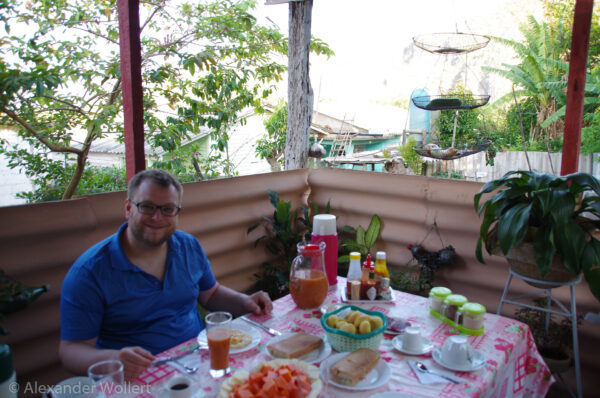
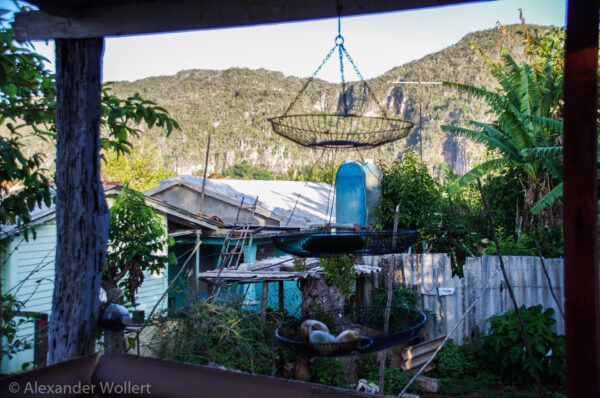
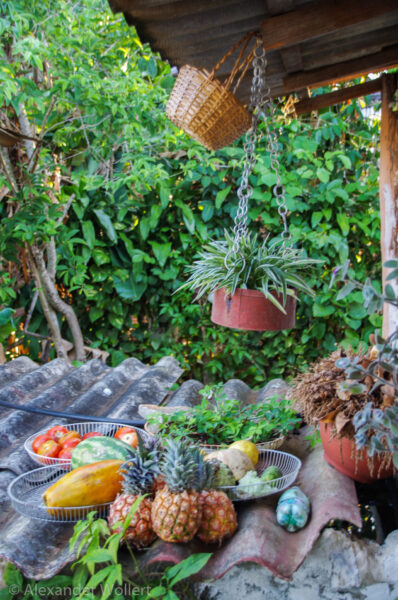

El Pumpo picks us up with his adventure mobile and we explore farms, tobacco and coffee plantations where he knows people. They greet us and patiently explain their work. The Valle de Viñales, where we are, is particularly famous for its tobacco plantations.
The famous Cuban cigars come mainly from this region and we are exclusively shown the manufacturing process.
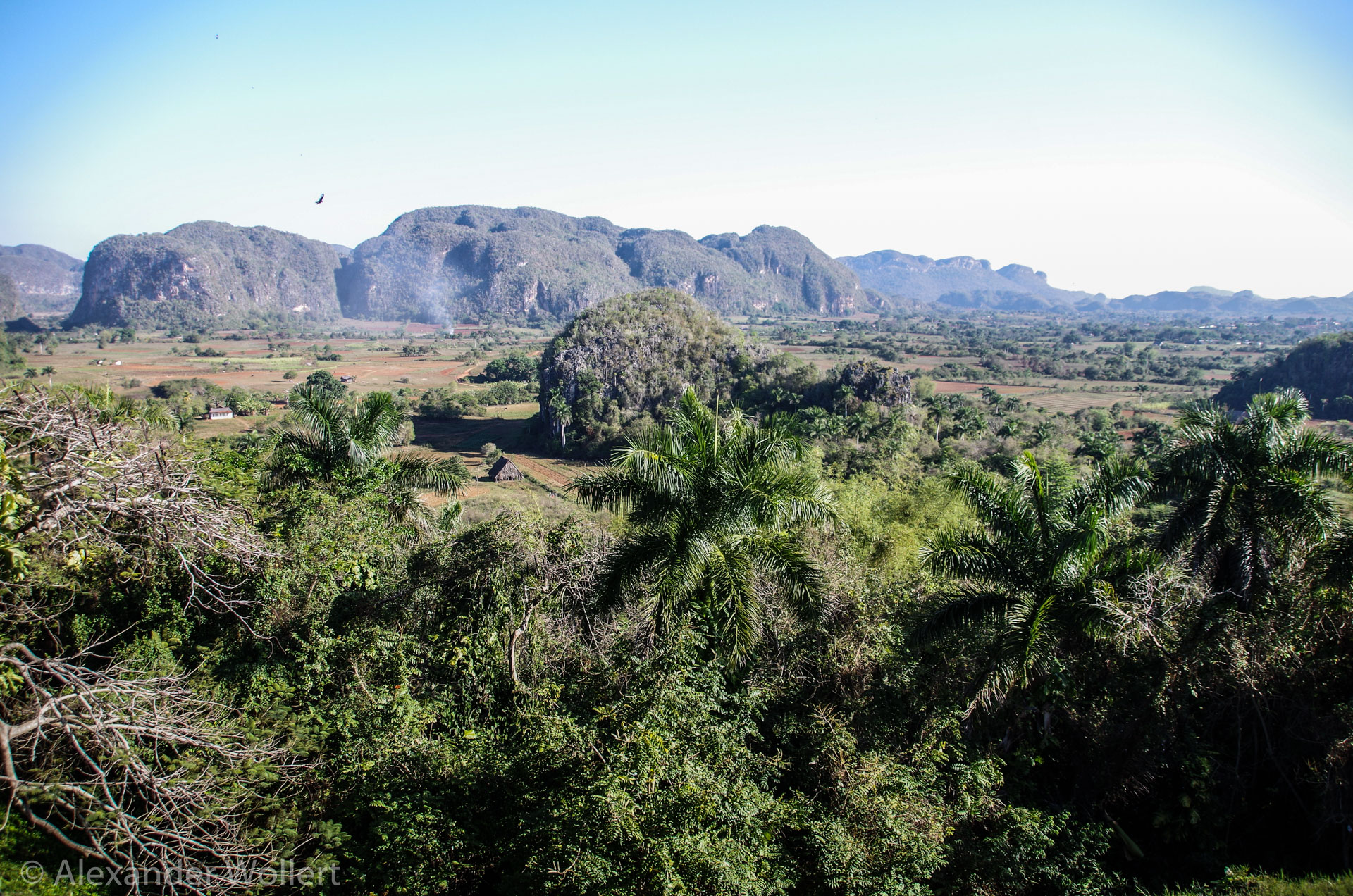
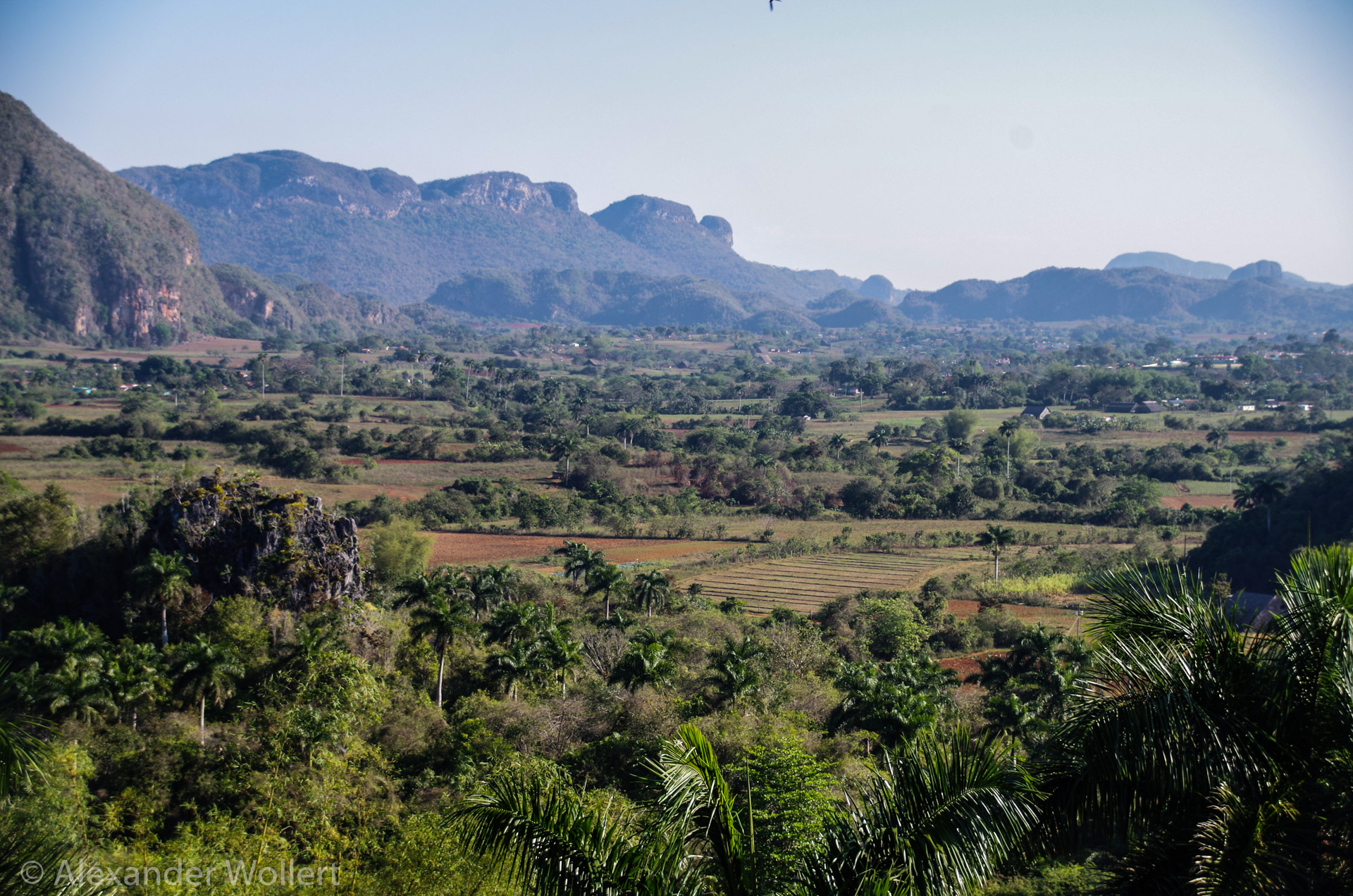
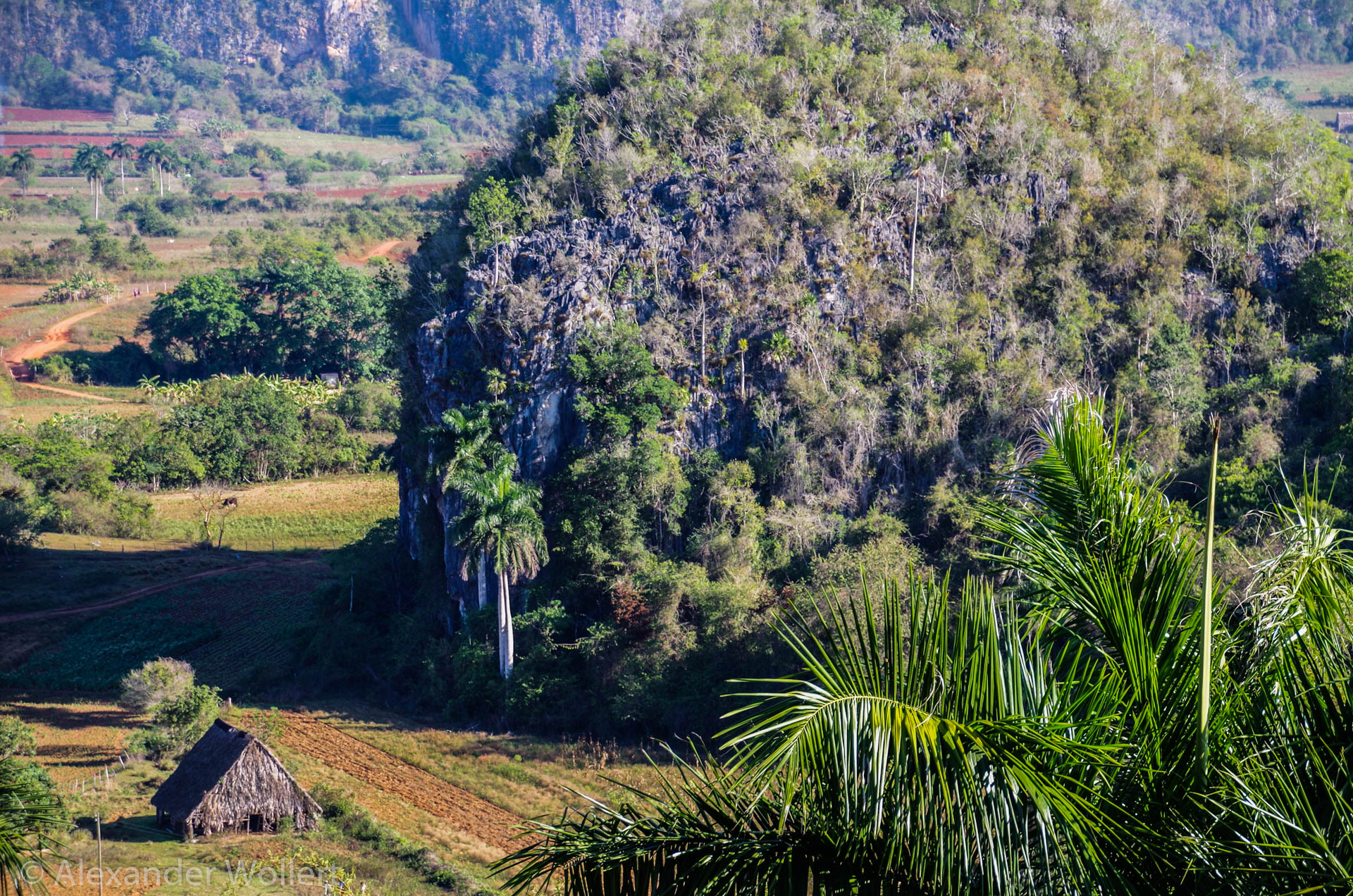

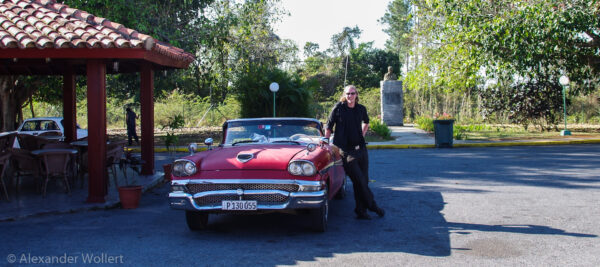
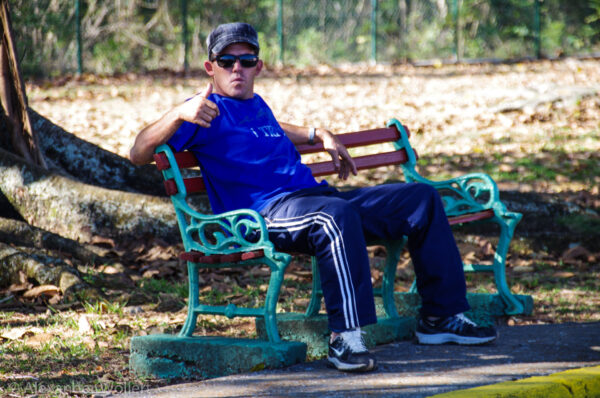
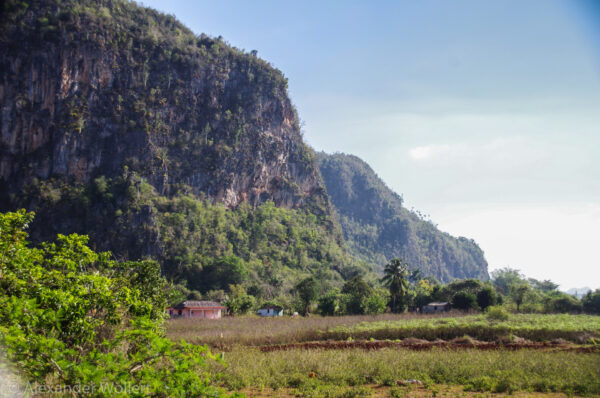
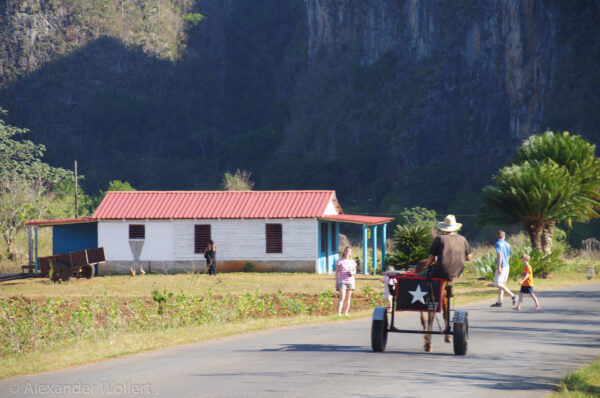
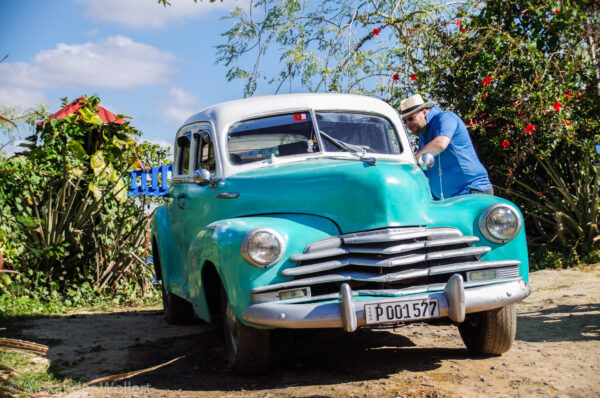


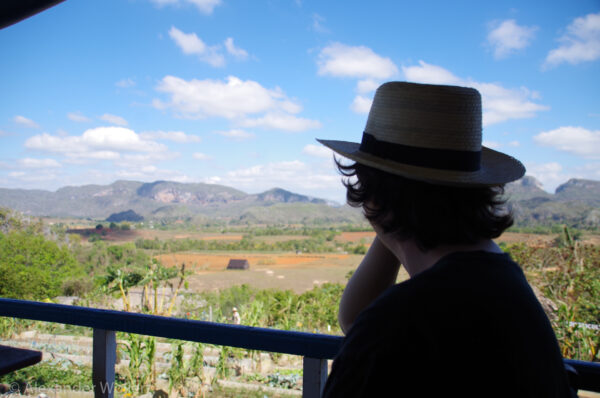

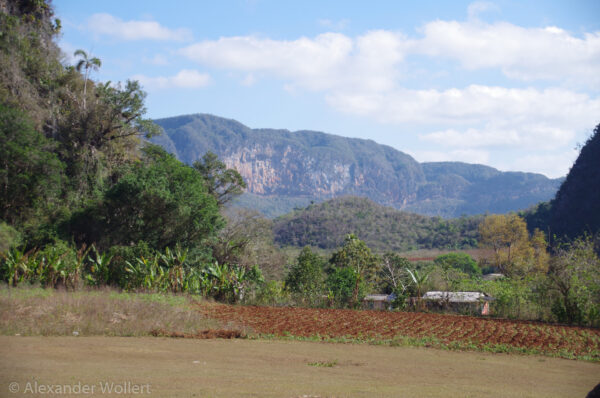

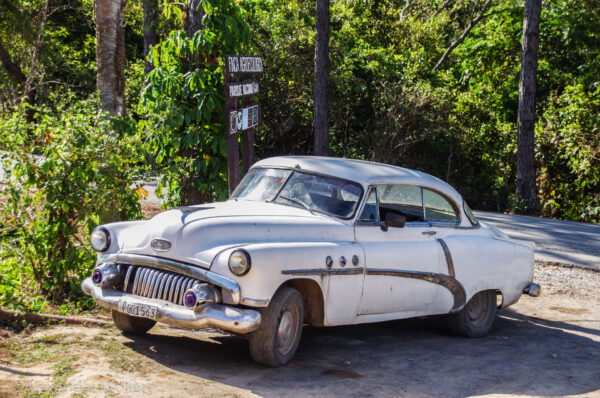
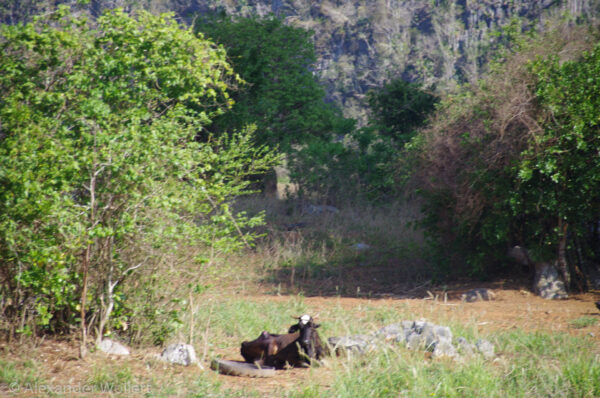
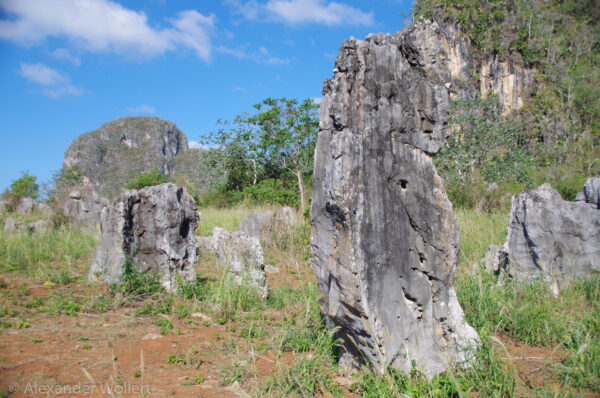
In one of the many drying huts, we are shown how to roll Cohibas (Fidel’s favorites) and Montechristos (Che’s favorites) while we all puff a final product together.
A special trick for the taste is to dip the cut end in honey.

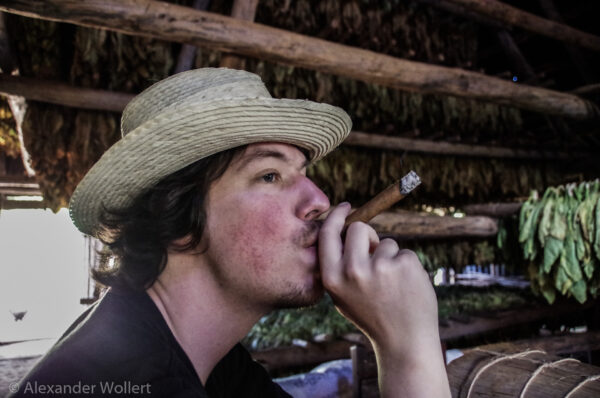

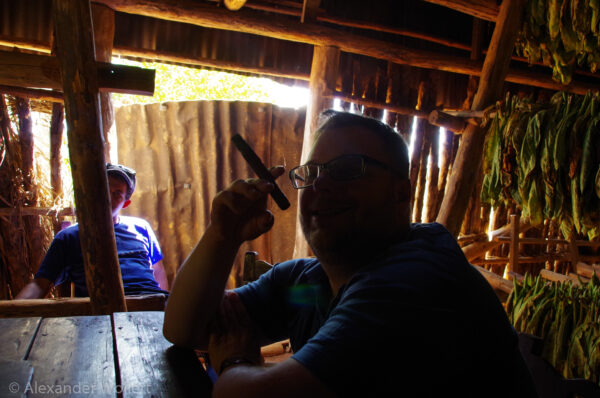
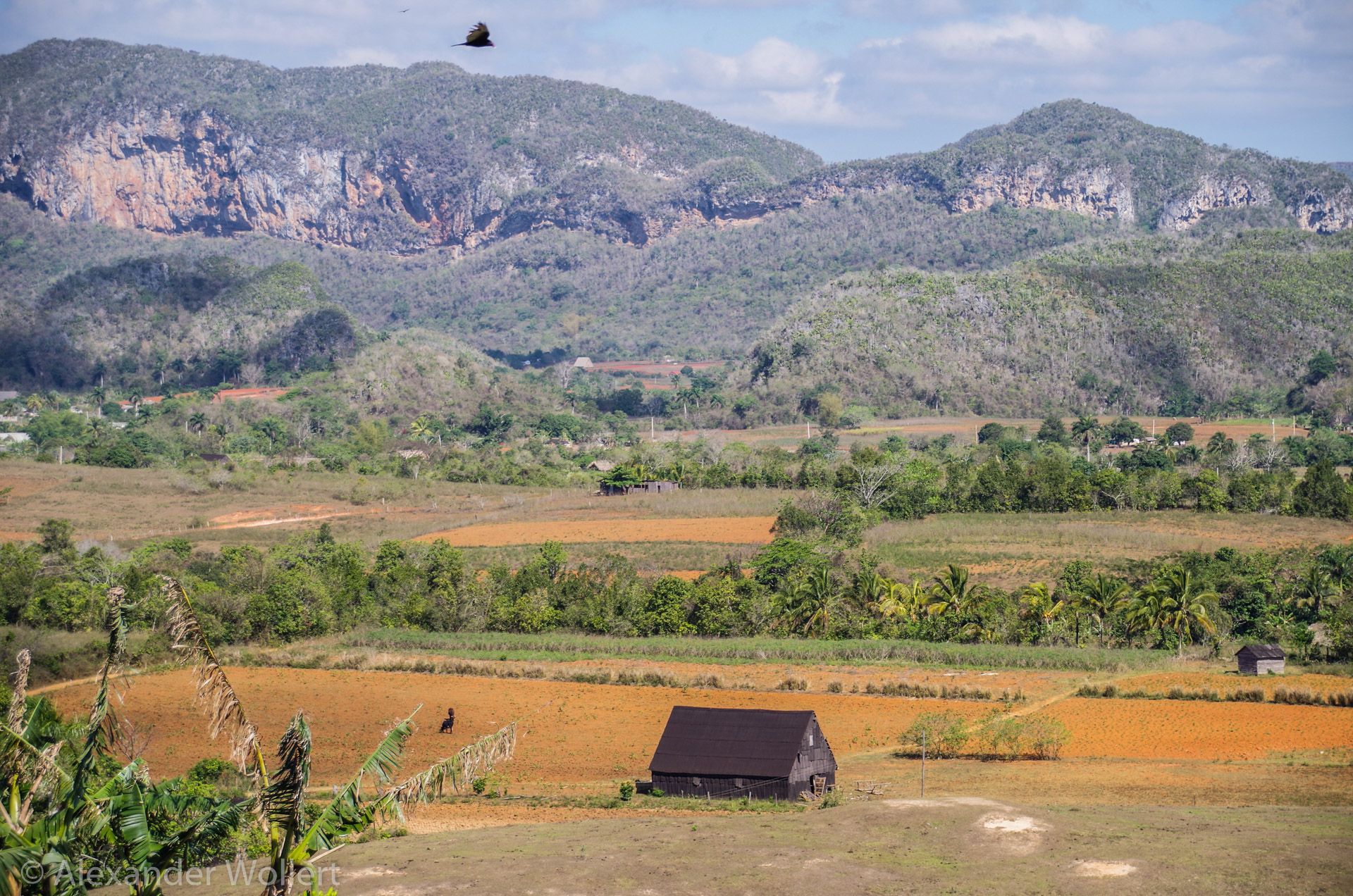
El Pumpo is a good guide, but he still has no sense of what we like. The Viñales Valley has a lot to offer. On the one hand there is the Campismo de dos Hermanas.
The special thing is not the small settlement, but the gigantic wall paintings on a rock face, which refer to prehistoric wall paintings in the area. The place is impressive, but also very touristy.
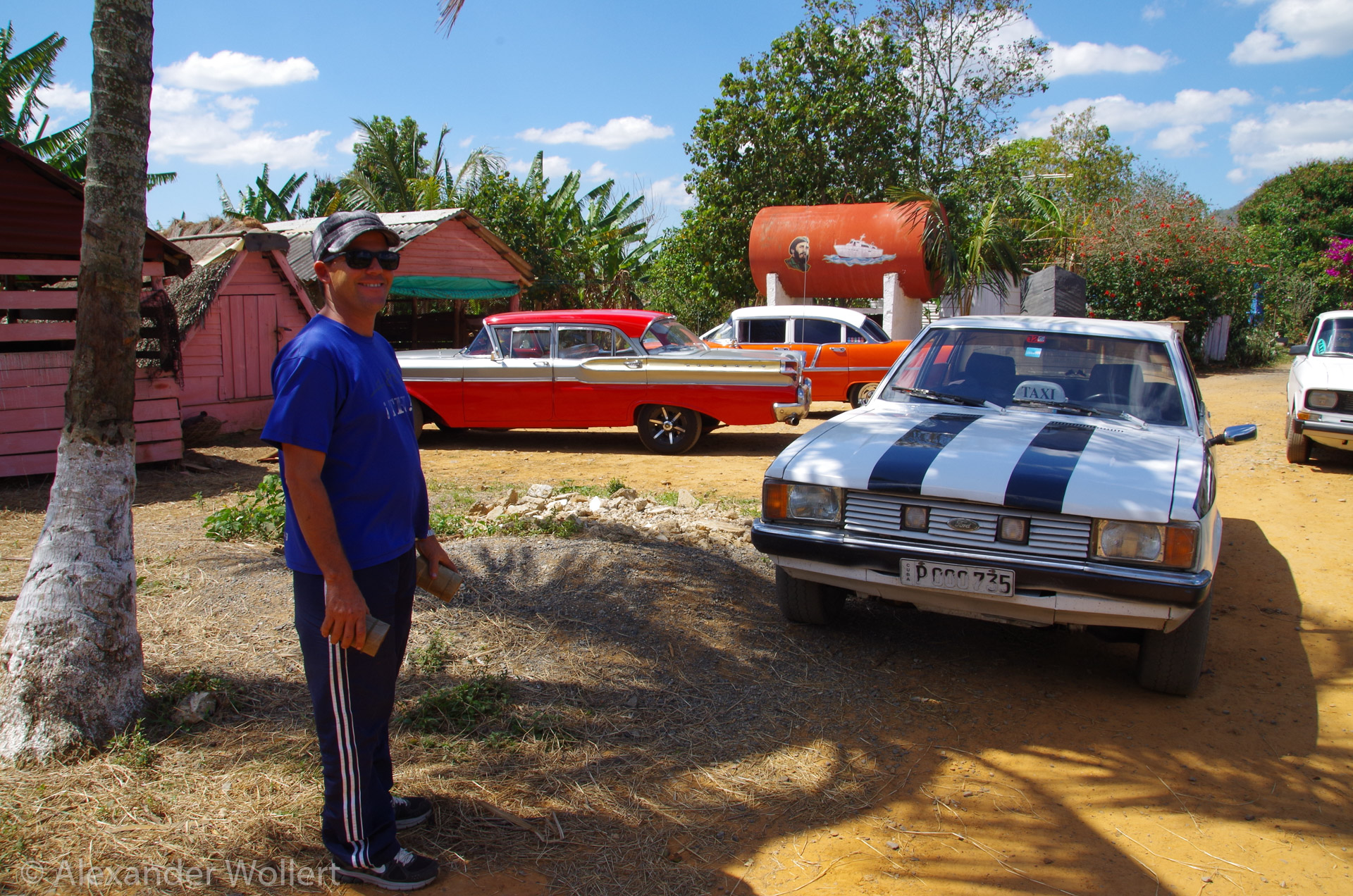
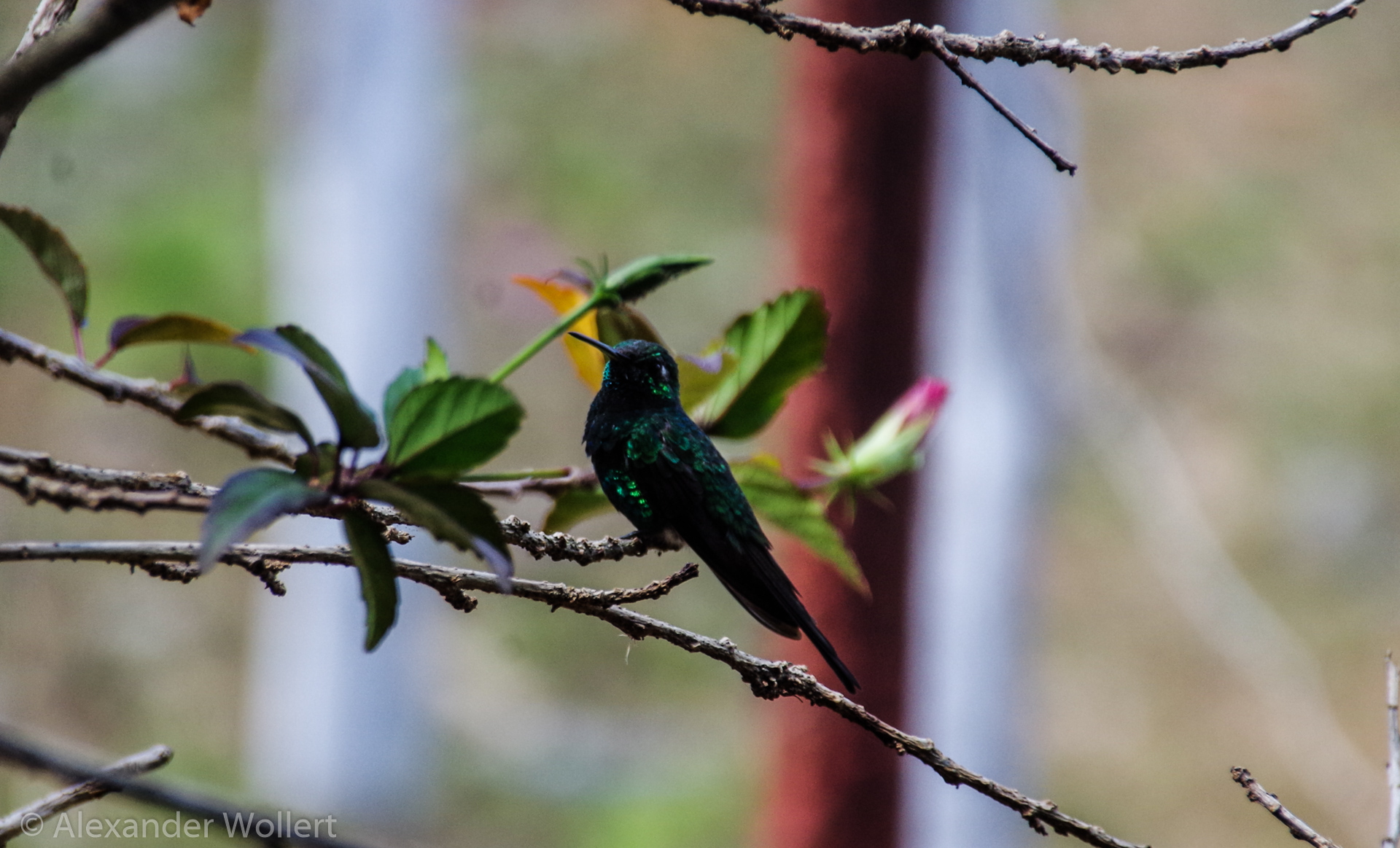
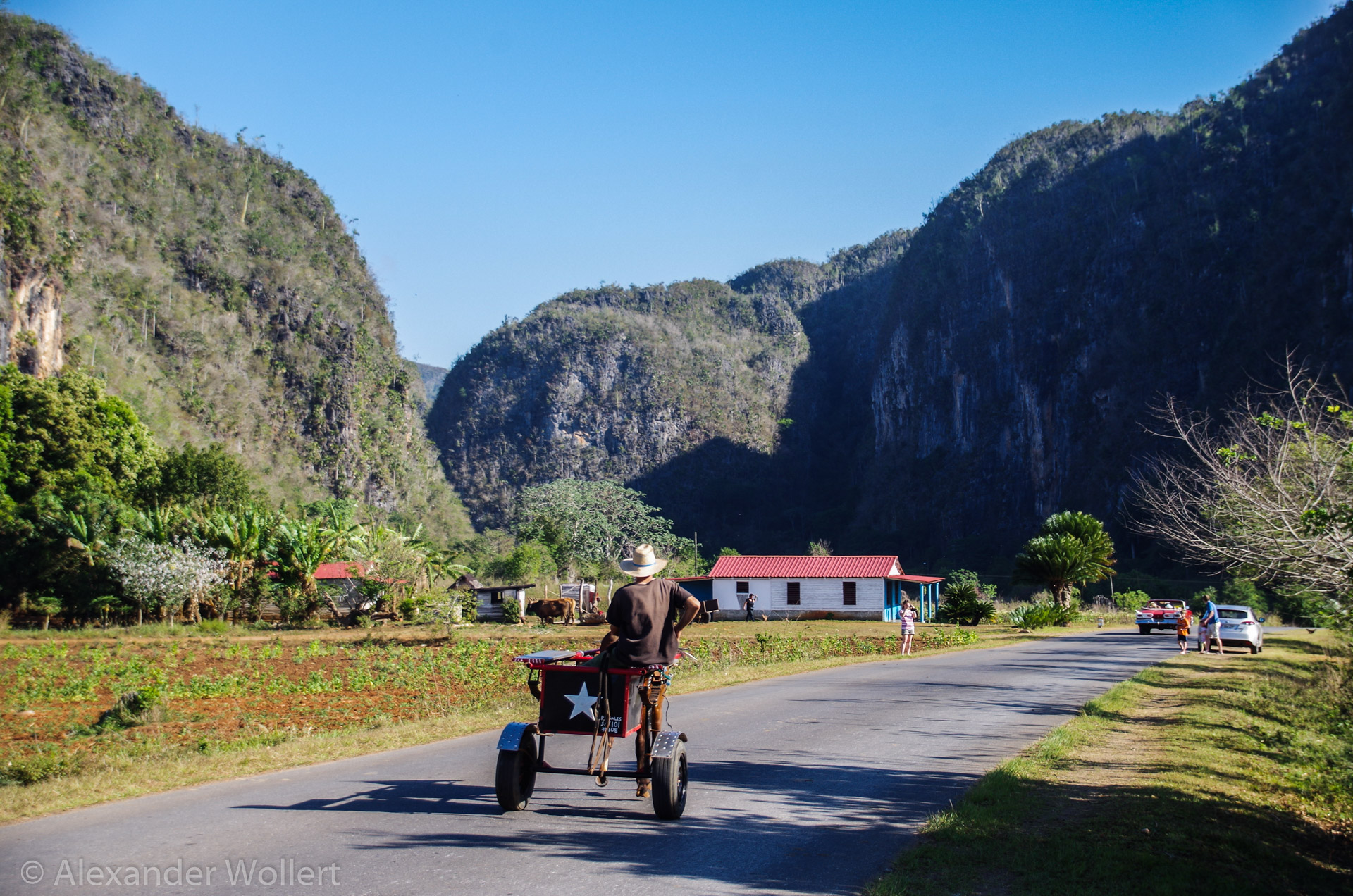
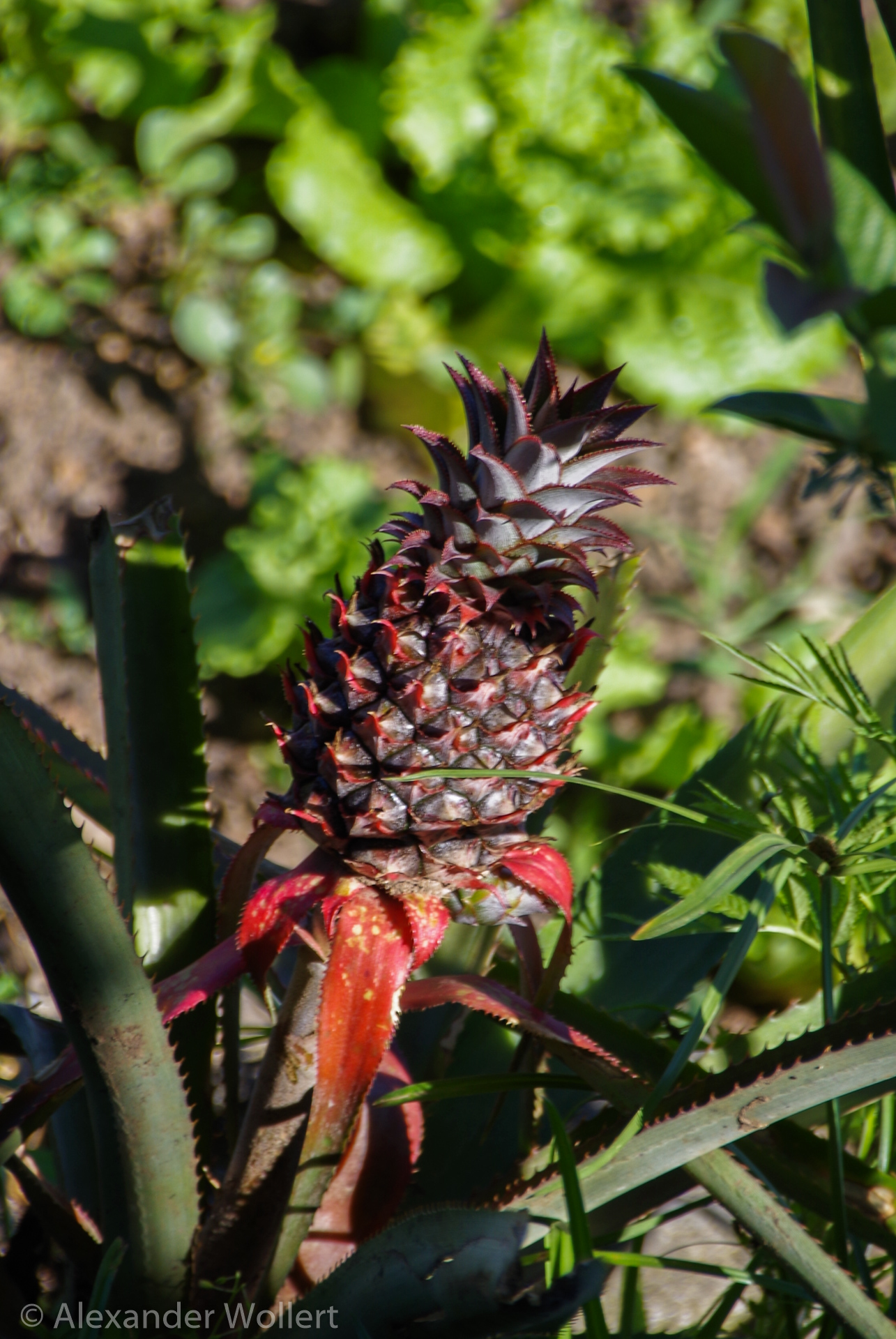

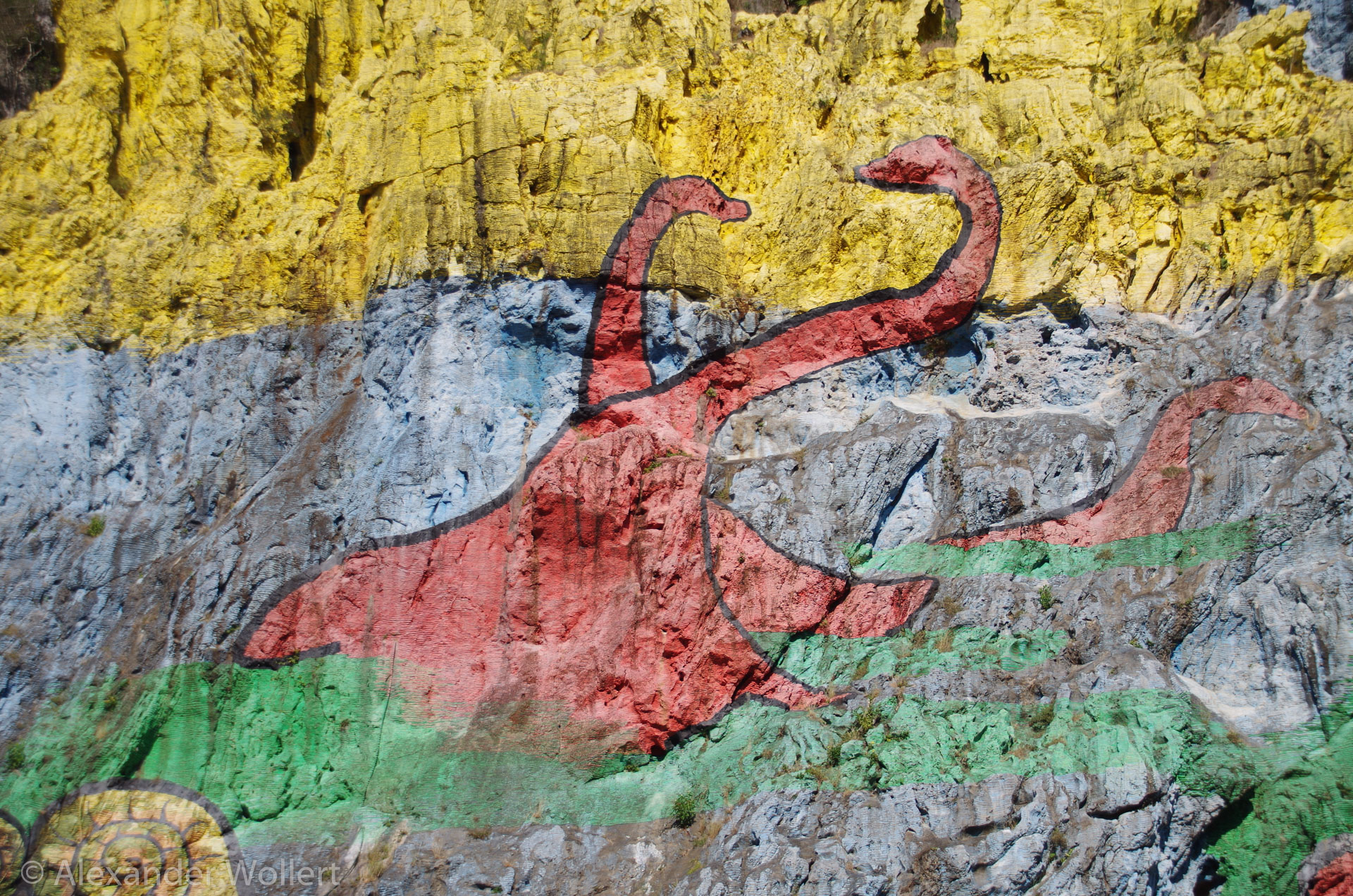
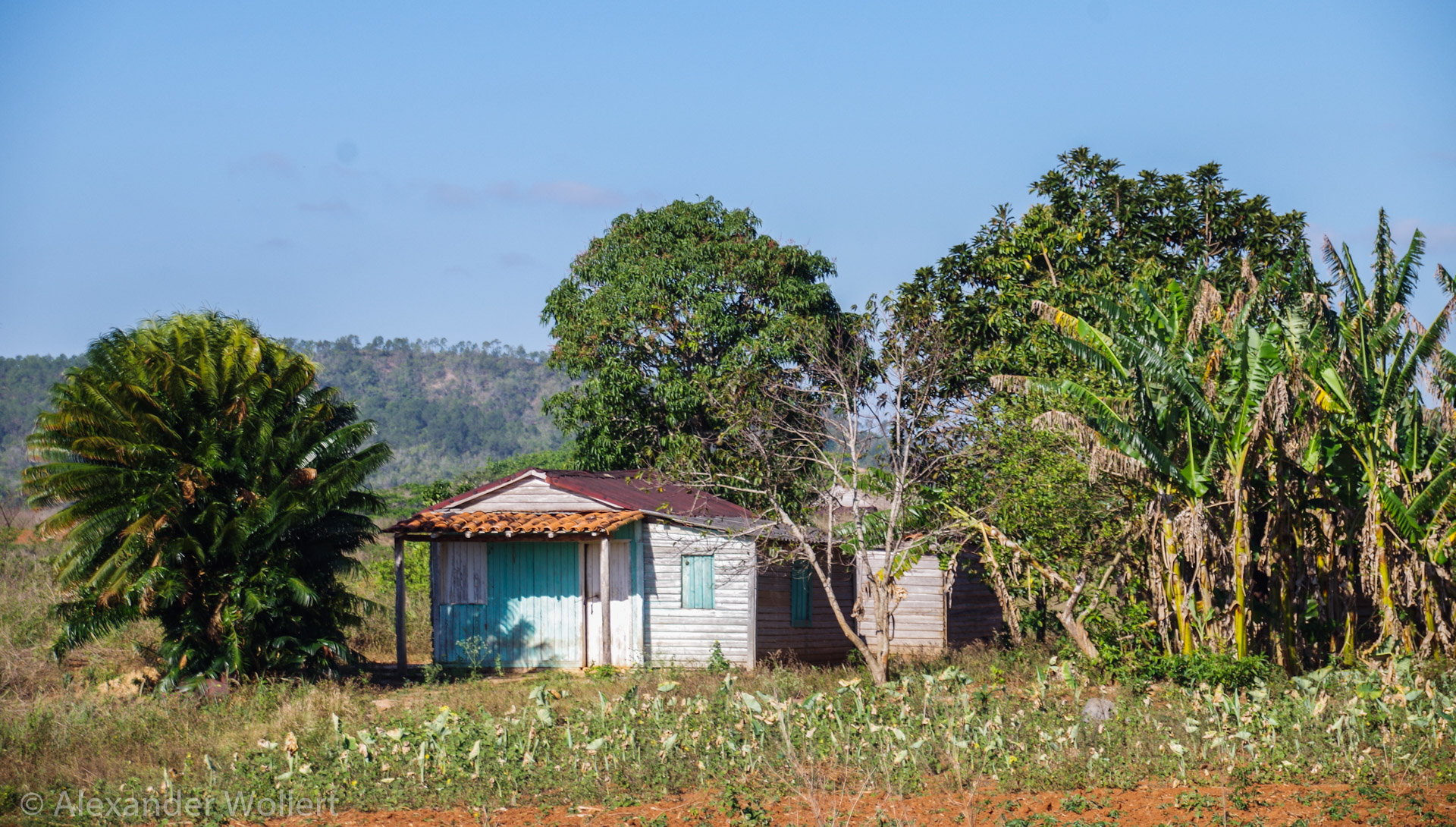
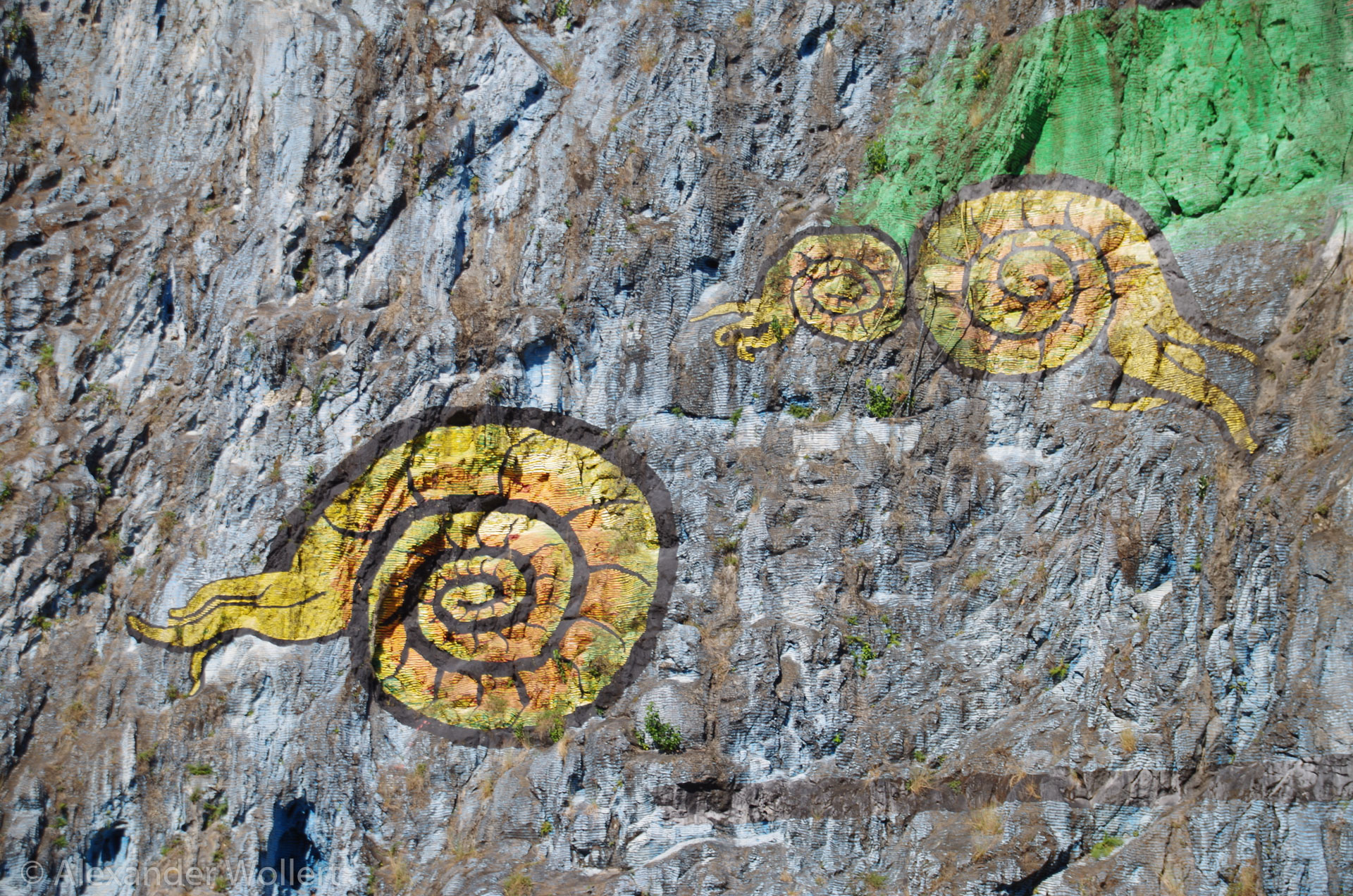
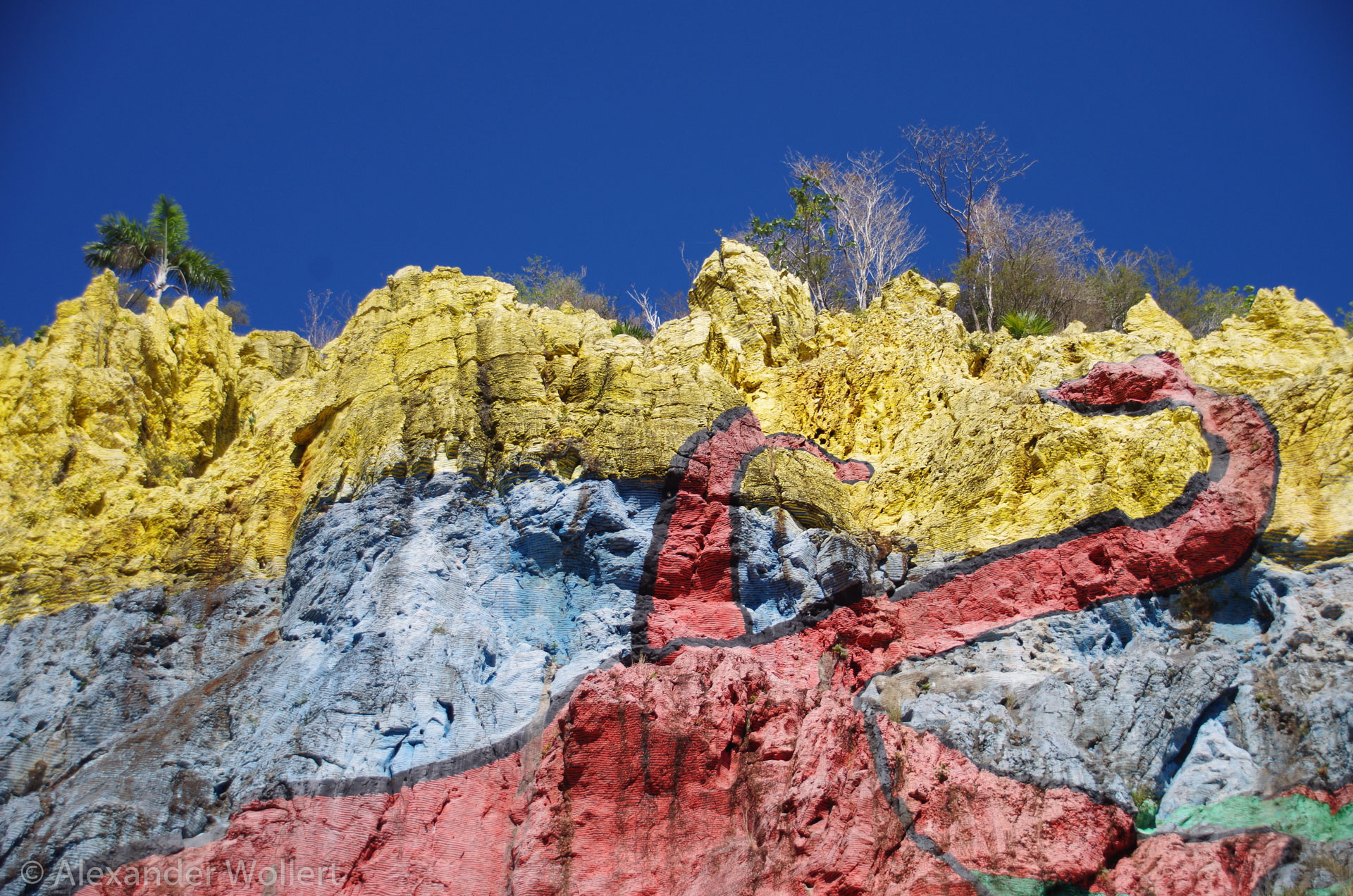
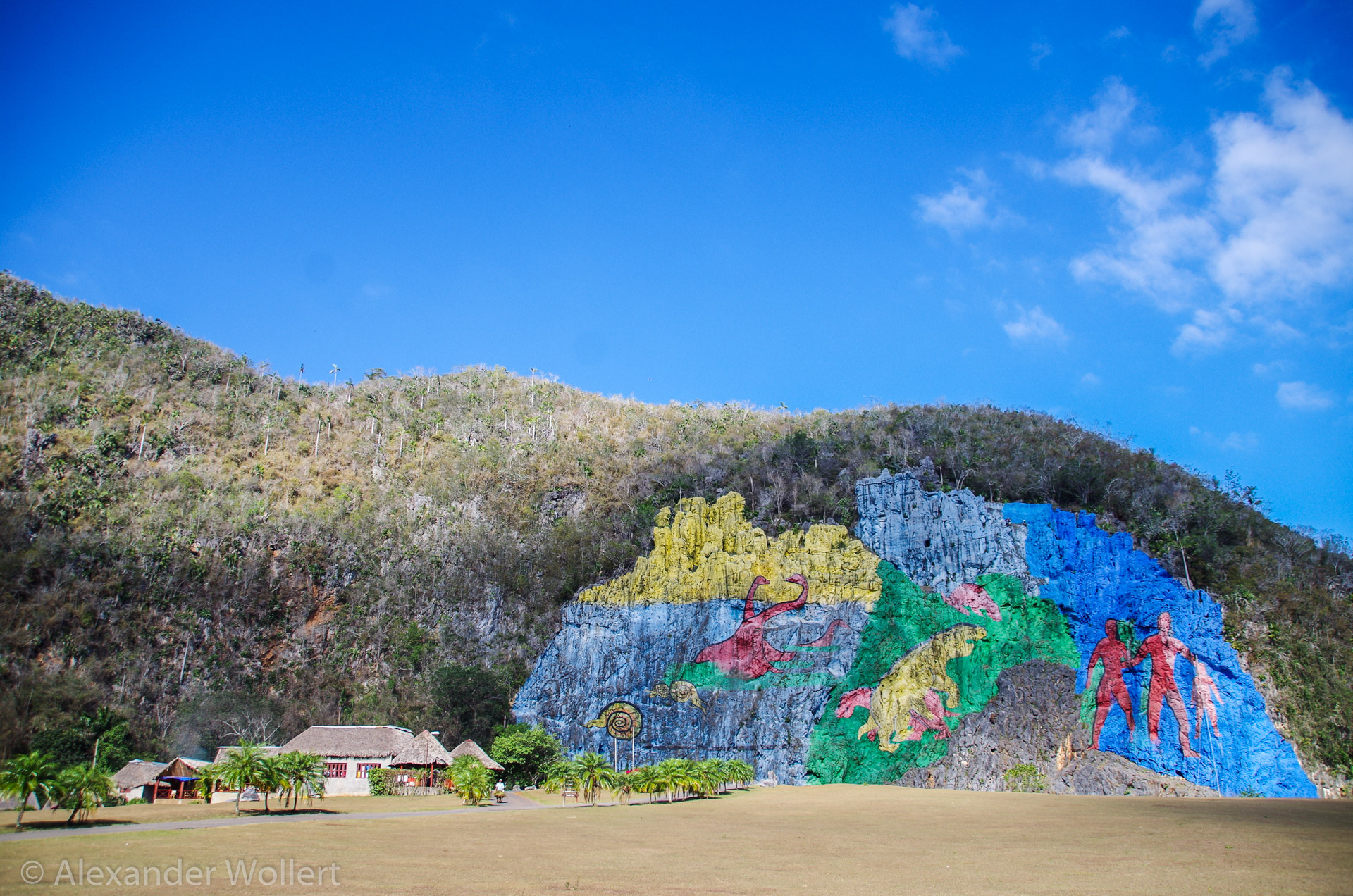
We are in the country out of season. It is April and the dry season in this region. However, there are a few well-known places where tourists go in the air-conditioned coaches. This also includes the Cueva de los Indios. According to legend, the daughter of a chief ran away and was hiding here.
Now the tourists hide there from the sun and let the locals gondola them on boats through a short stretch of river in a stalactite cave. It’s too much for us and we nag El Pumpo that we prefer more individual sights. He takes note of our comments without a word and drives off.
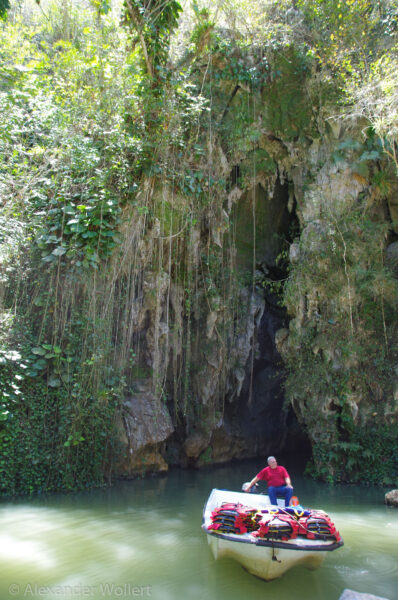
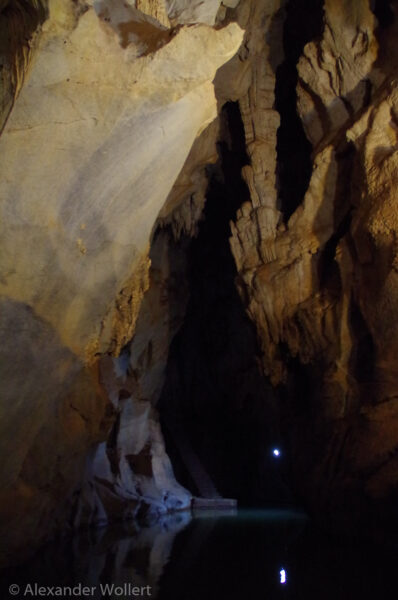
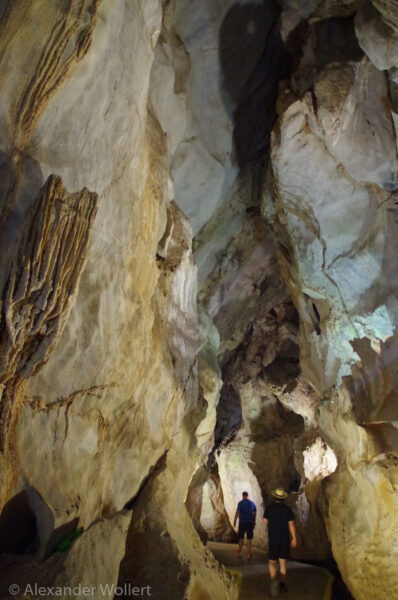
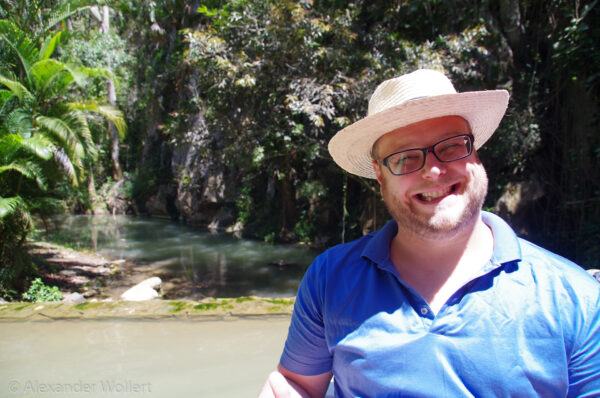
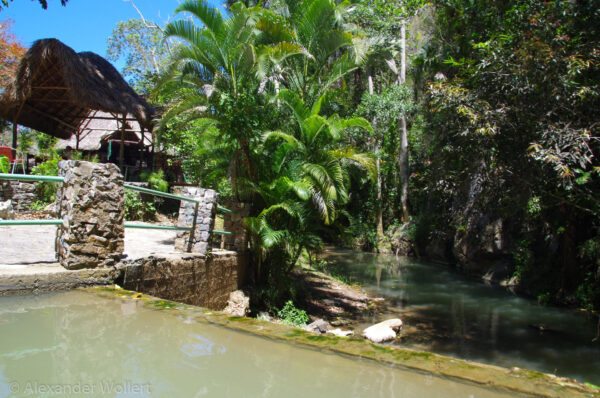
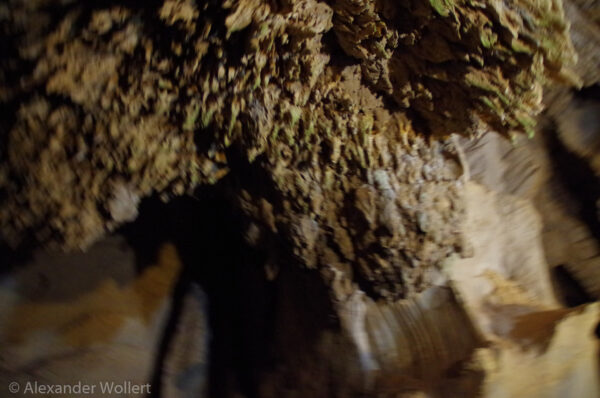
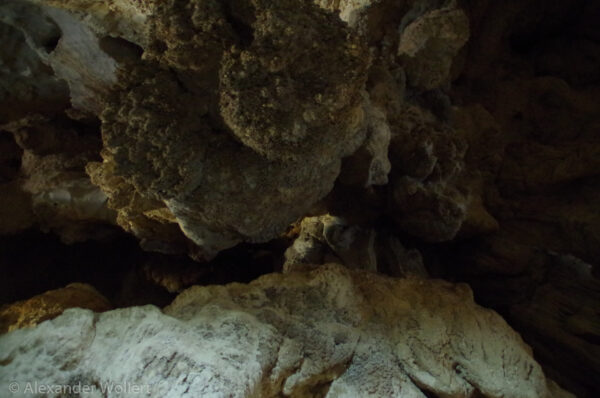
El Pumpo stops at a friend’s farm and tells us that there is a coffee plantation here. The guy with the hat is happy about our visit and immediately falls into a torrent of speech.
He signals us to follow him and points to a few tiny coffee trees as he walks past, while he leads us further into the bush. We have no idea what he’s trying to show us.
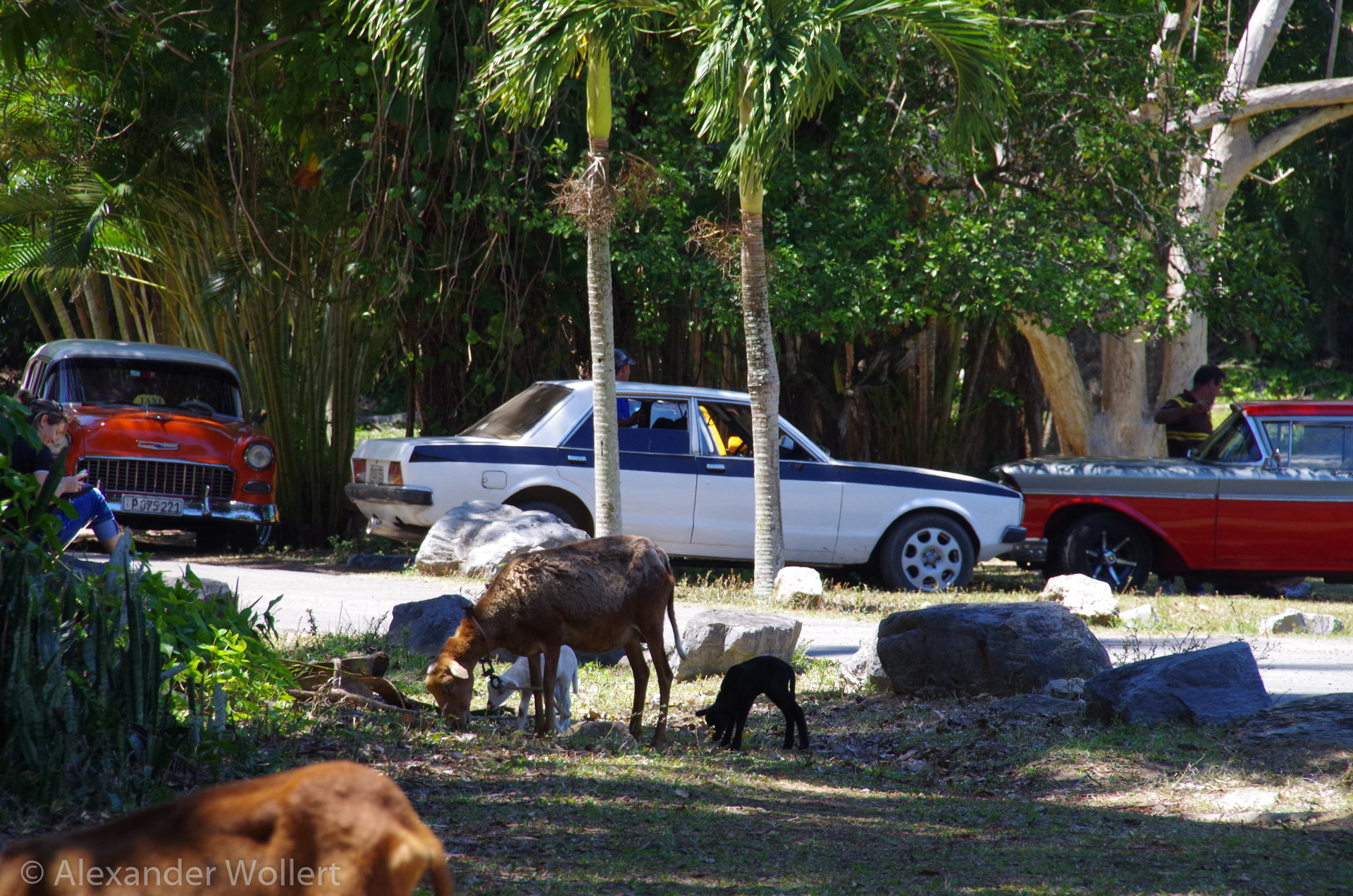

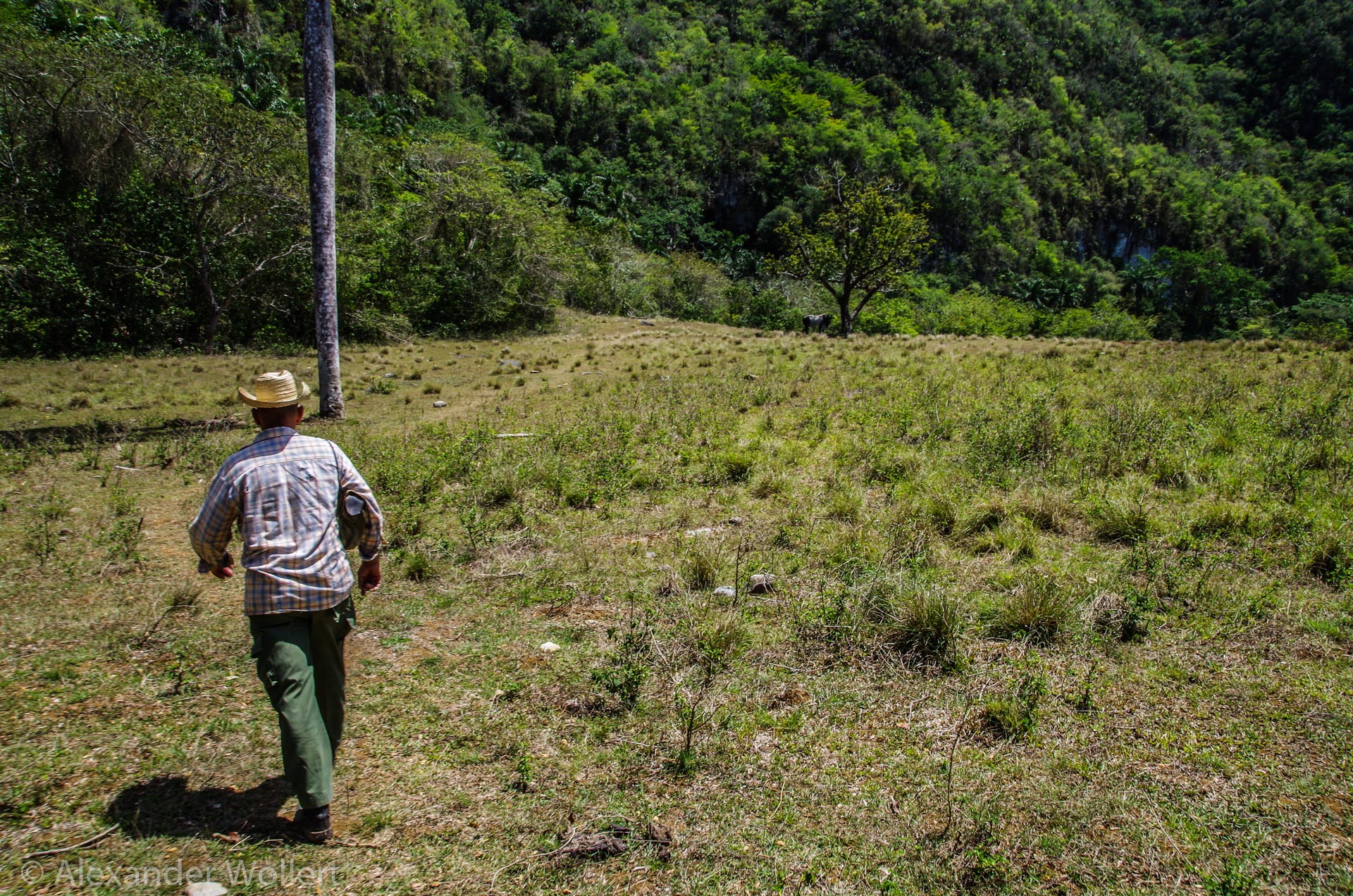
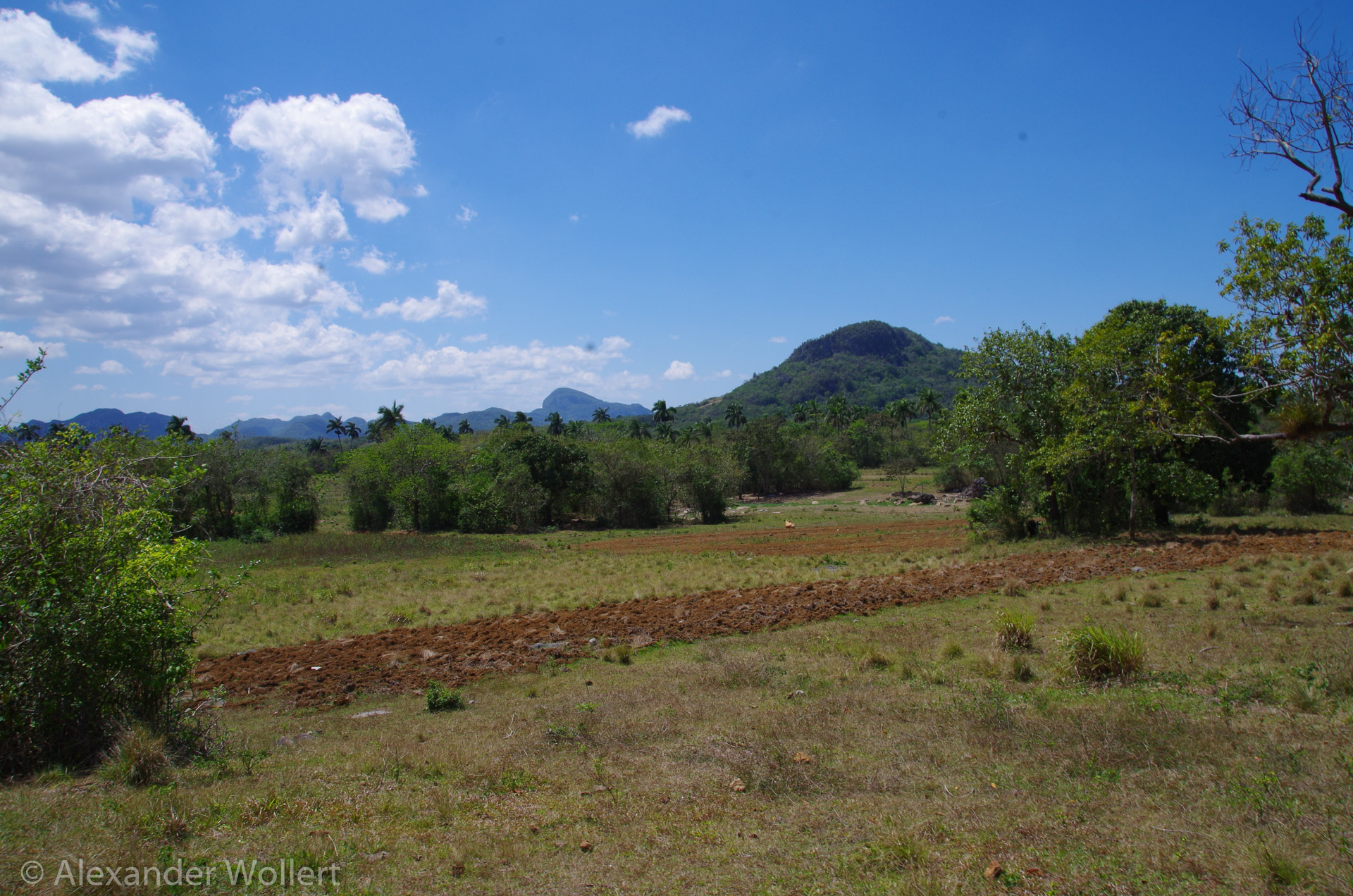
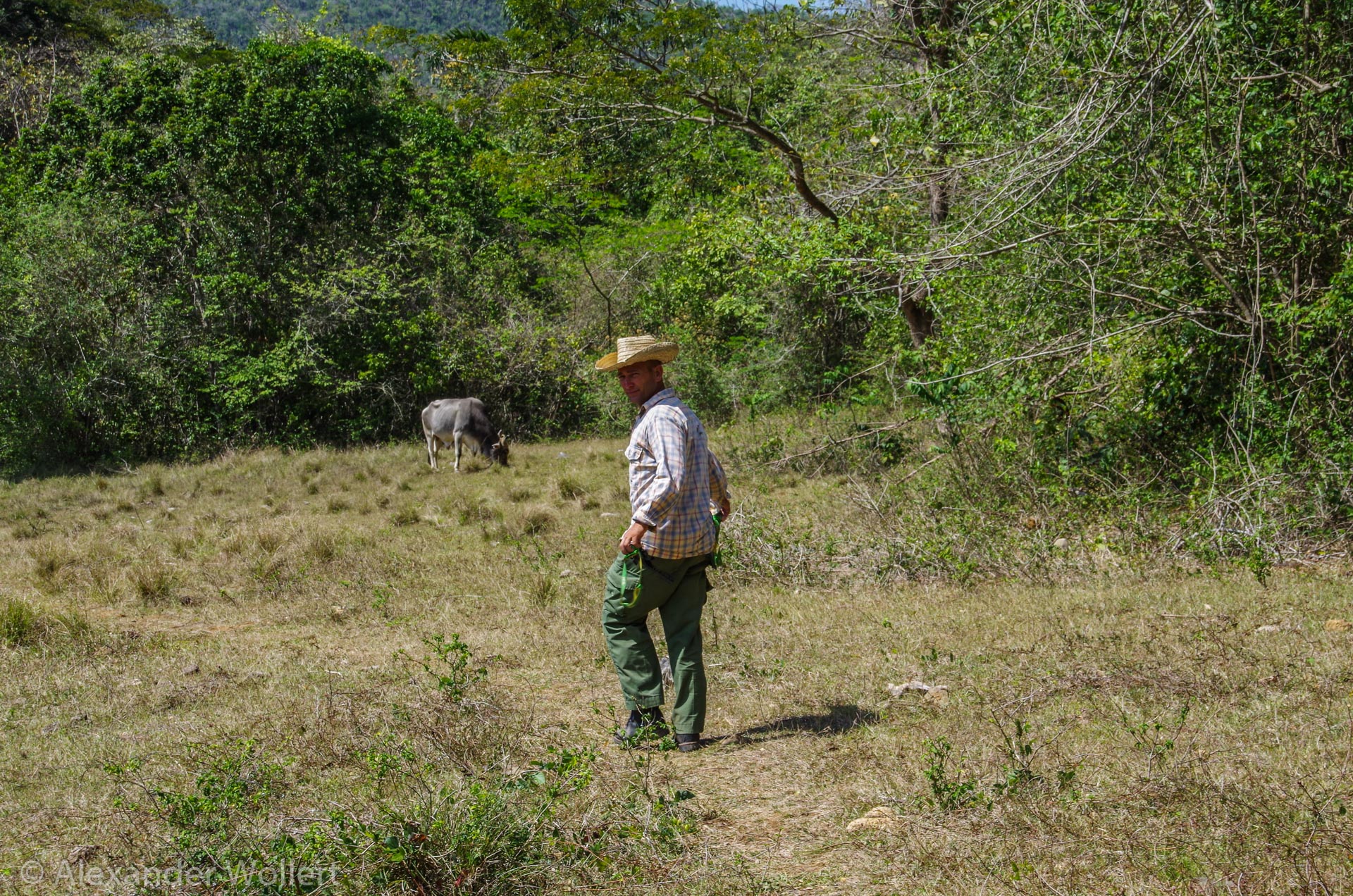

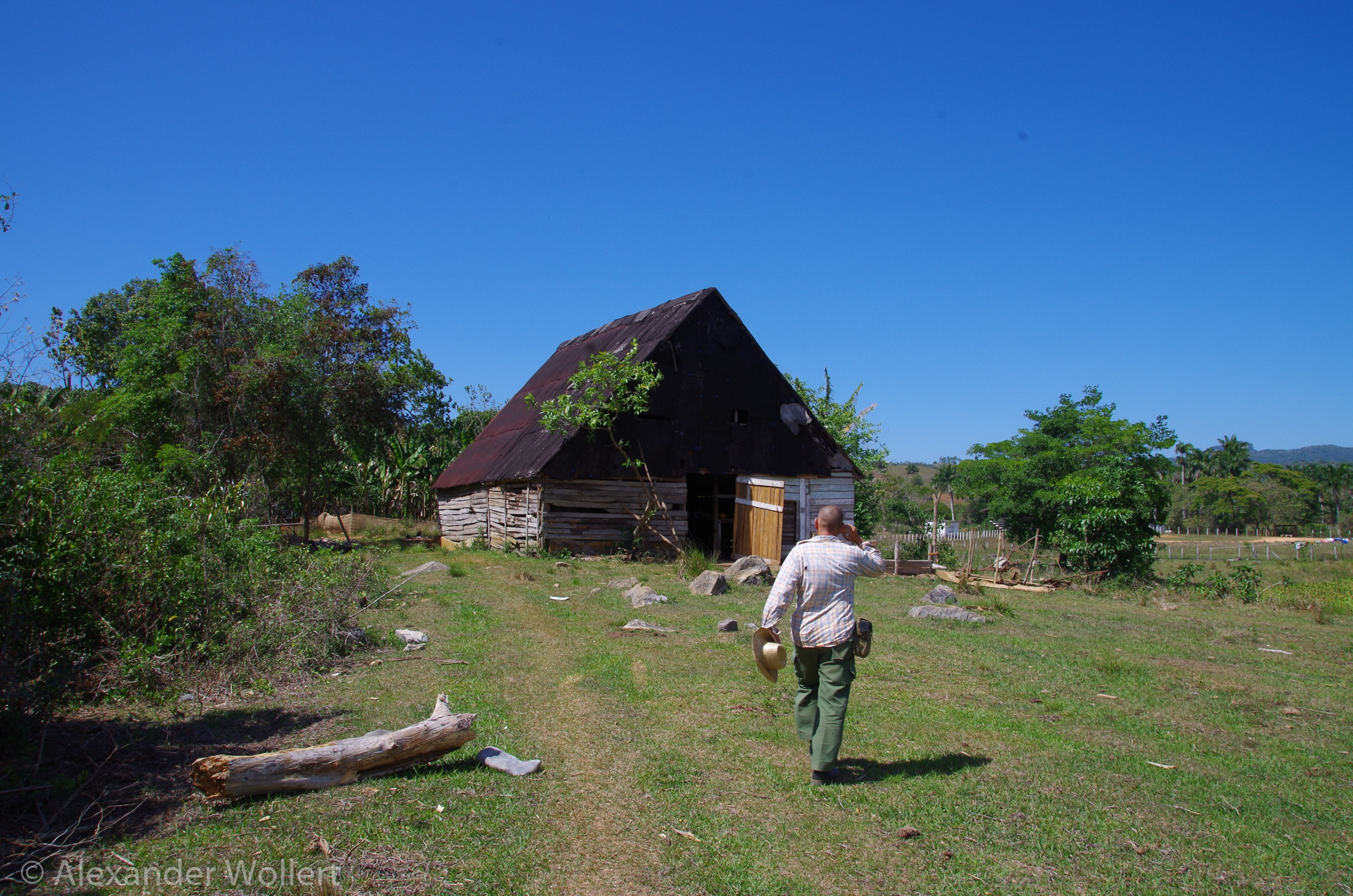
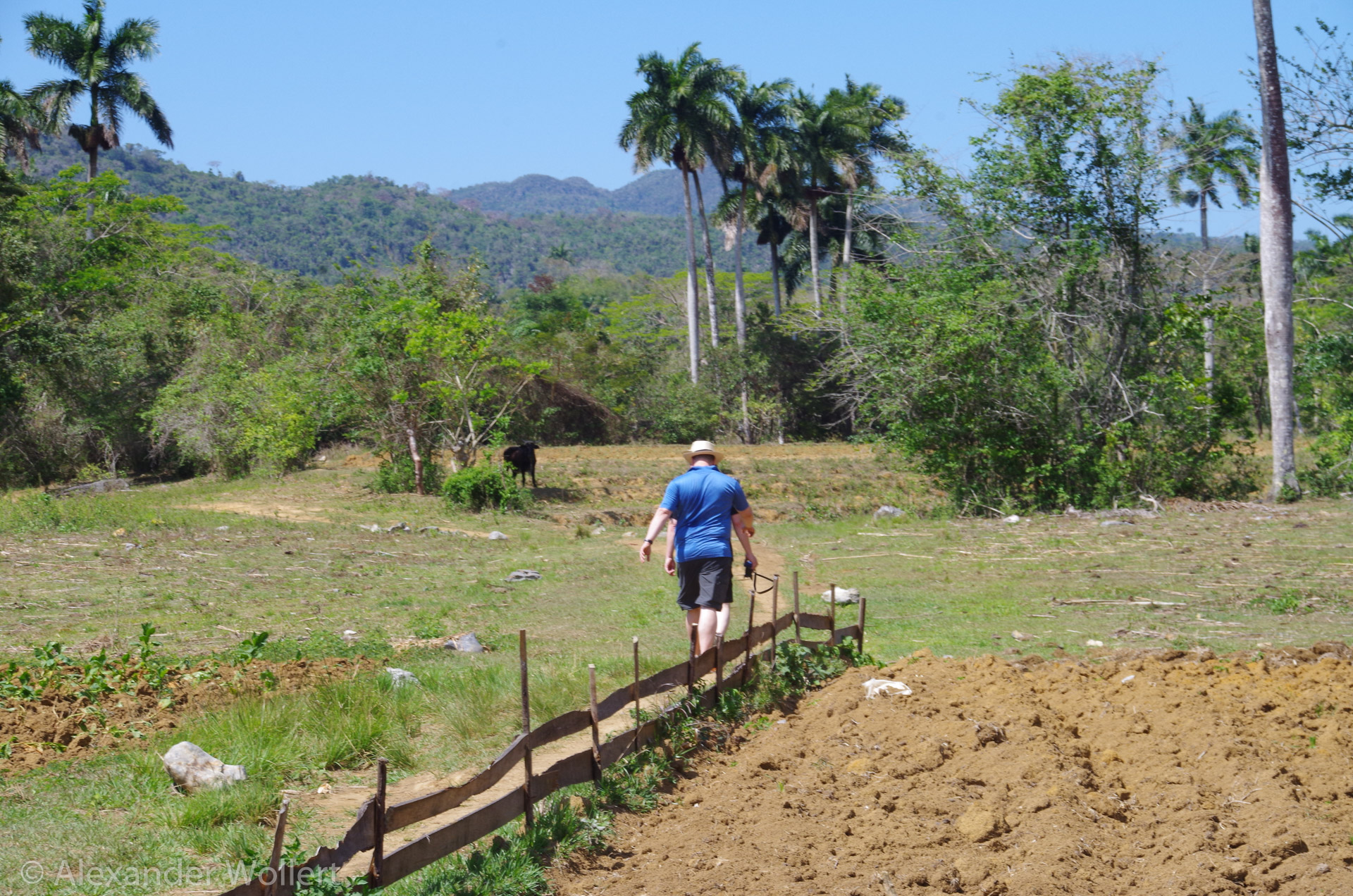
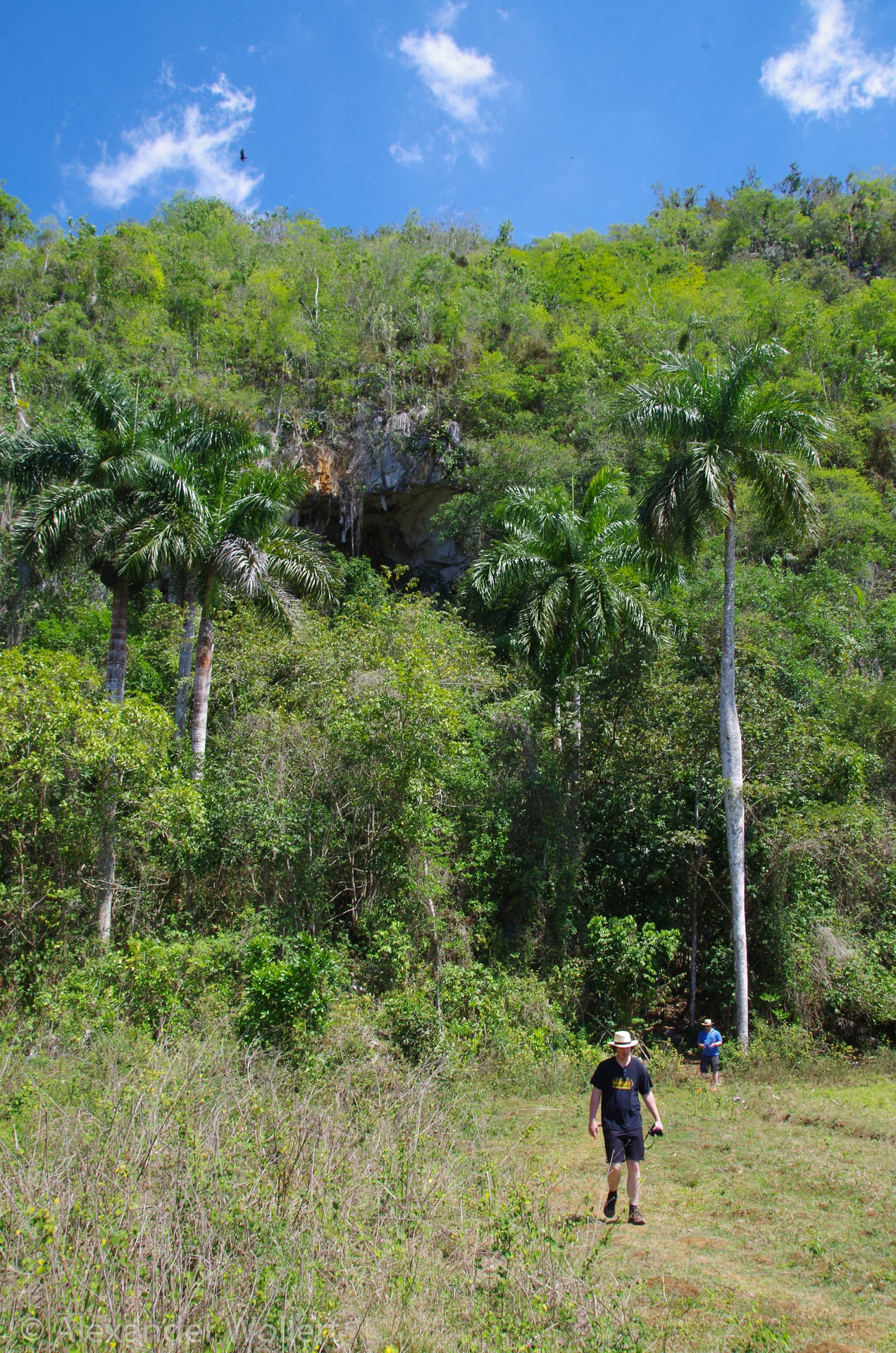
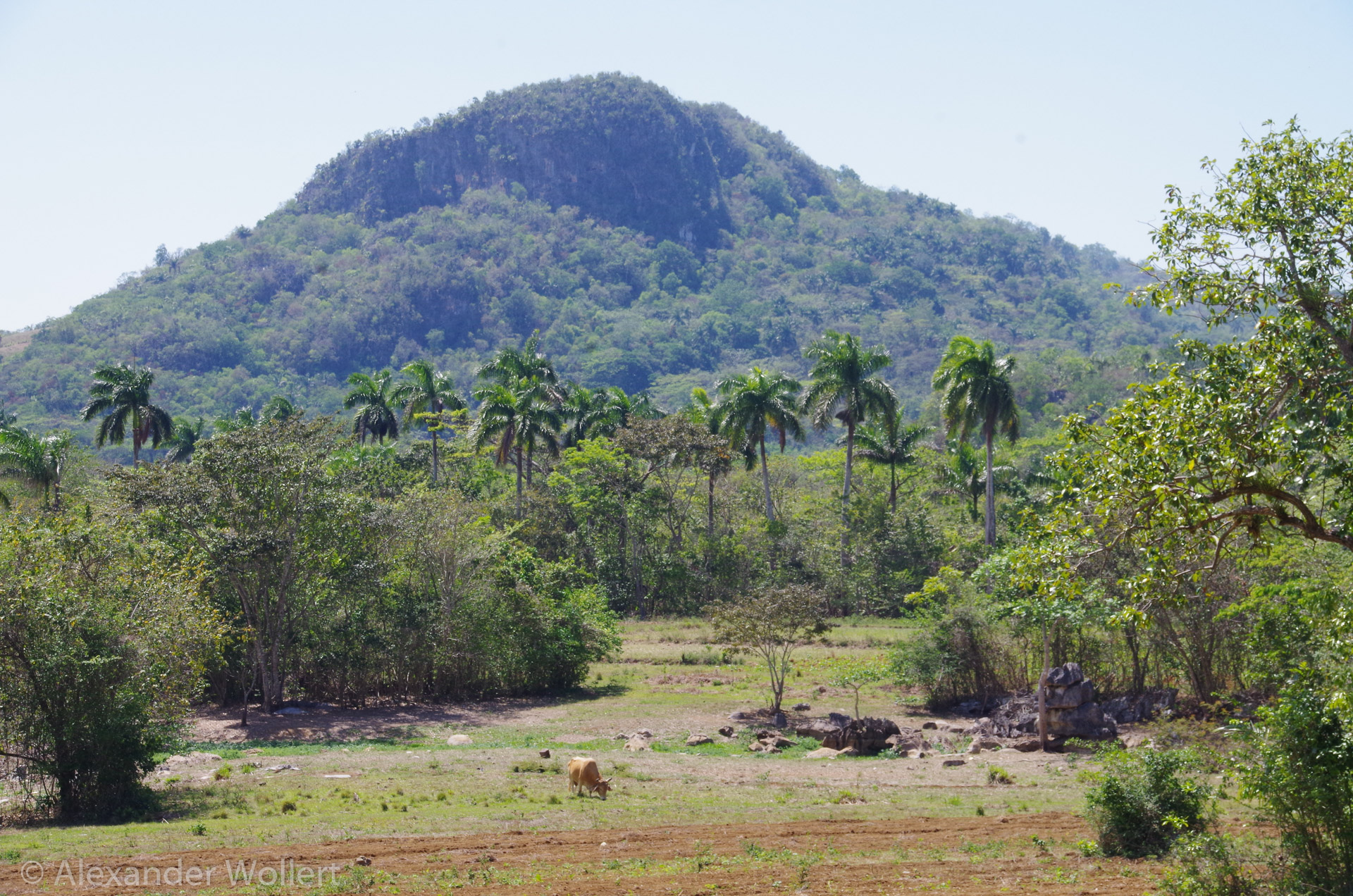
Then we stand on a rock wall, he pulls a couple of headlamps out of his pocket and makes us the offer to visit the cave visible behind him. The entrance looks impressive and in fact it claims that this cave is actually one of the largest in Latin America and that there are the most extraordinary formations to be seen there. To be alone with a strange guy in a huge undeveloped and unsecured cave in the dark is exactly our taste. And he didn’t promise too much. On a difficult route, after climbing and squeezing through narrow crevices in the flickering light of our weak lamps, we reach a cathedral-sized vault and see limestone formations that look like frozen cloths hanging from the sky, glittering calcium mushrooms as well as stalagmites and stalactites 8 to 12 meters high .
At some point our guide explains to us that we are 200 meters underground and shows us where plants and animals live in total darkness. We are very impressed and have long forgotten our disappointment with the Touri Cave. Our guide explains that this cave system was used by the farmers as a hiding place, but also as a shortcut to the next valley. But you should know your way around, because in the dark you can quickly take the wrong path …
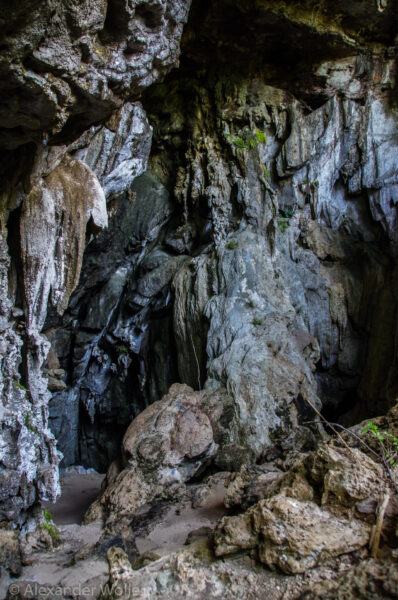
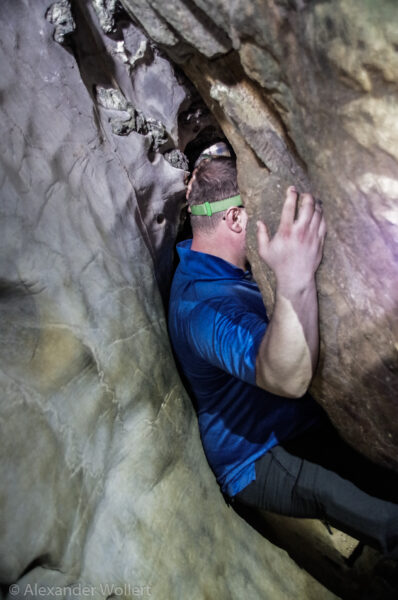
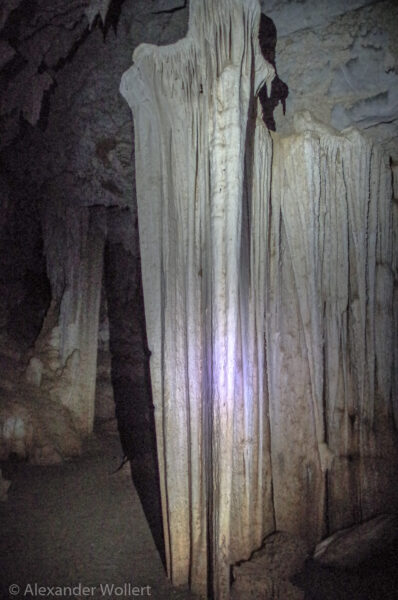
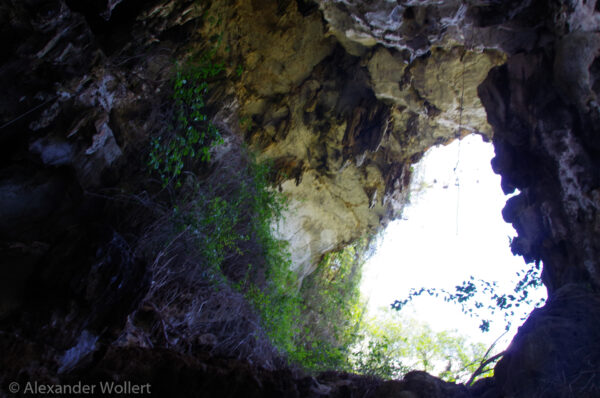
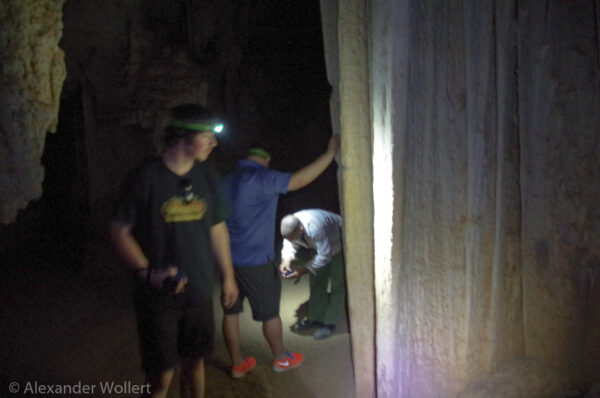
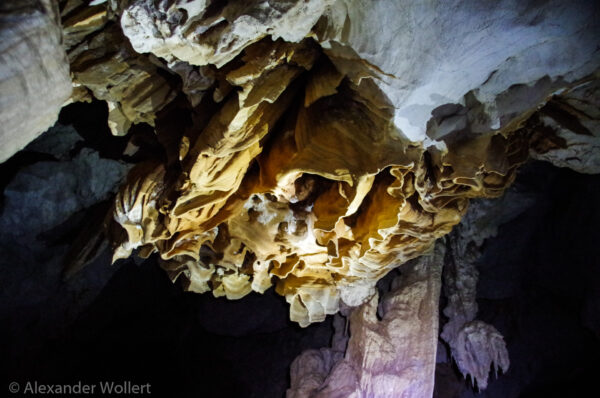
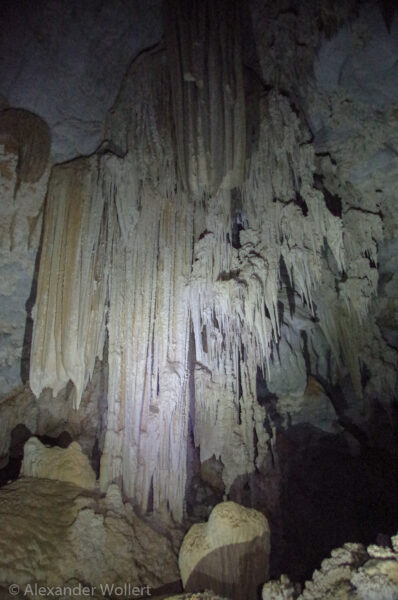
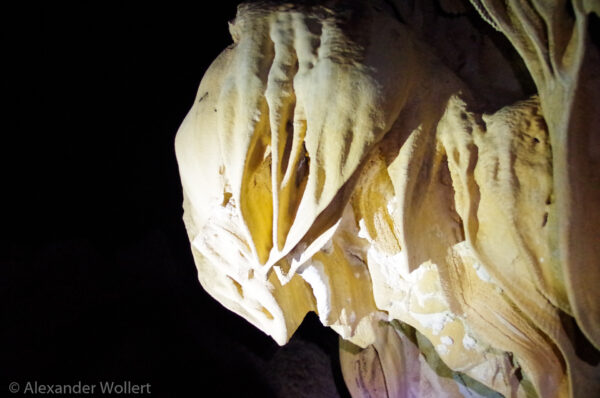

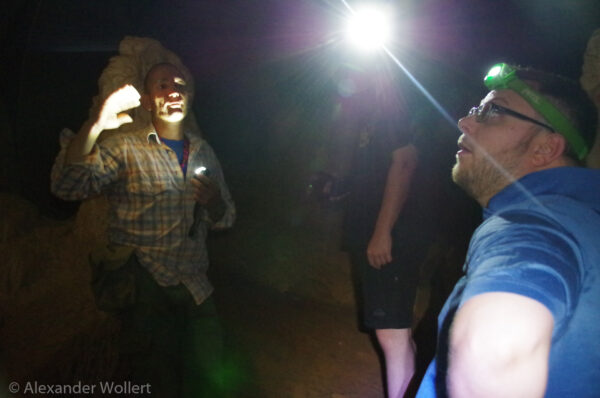
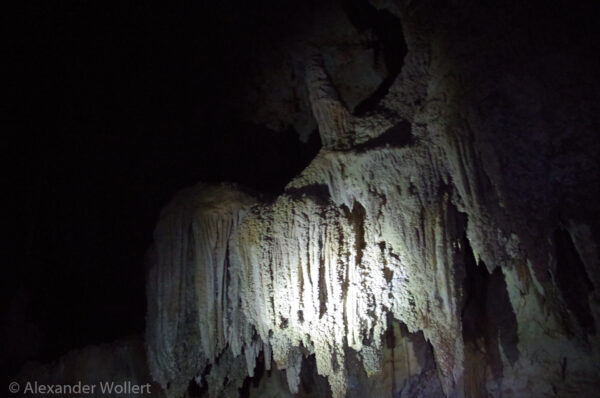
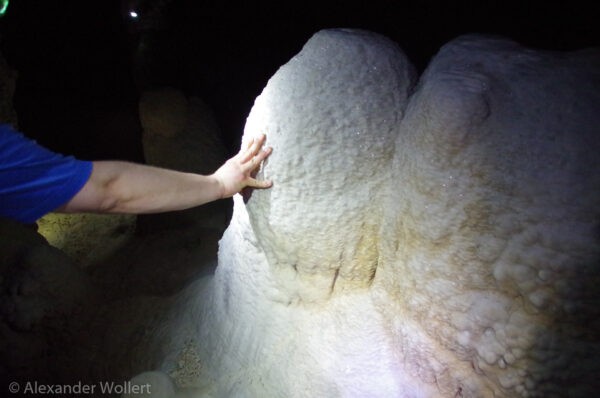
The roads in the country are just as disastrous as in Havana, but in contrast to the capital, the brittle asphalt is still teeming with chickens, ox carts, horse-drawn carts, dogs and people. Vultures circle above our heads. Always and everywhere you can see the black birds with red heads. The food supply seems to be very good …
El Pumpo will continue to accompany us. The next destination of our trip is the Bay of Pigs. This place achieved fame at the latest when the American invasion failed on April 17, 1961, that is, in the same month of our visit, exactly 54 years ago.
